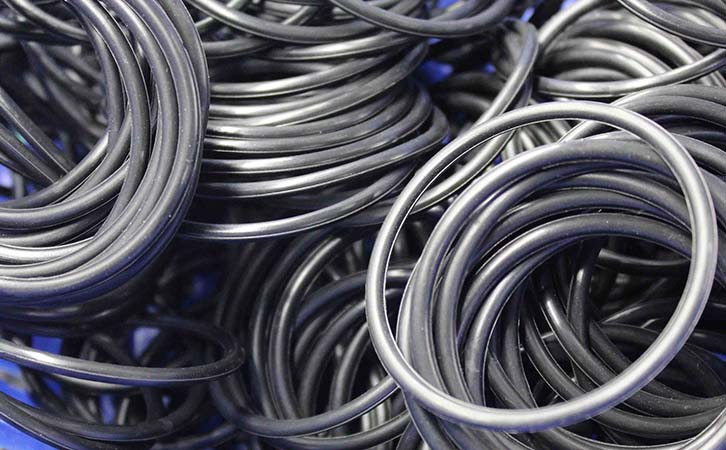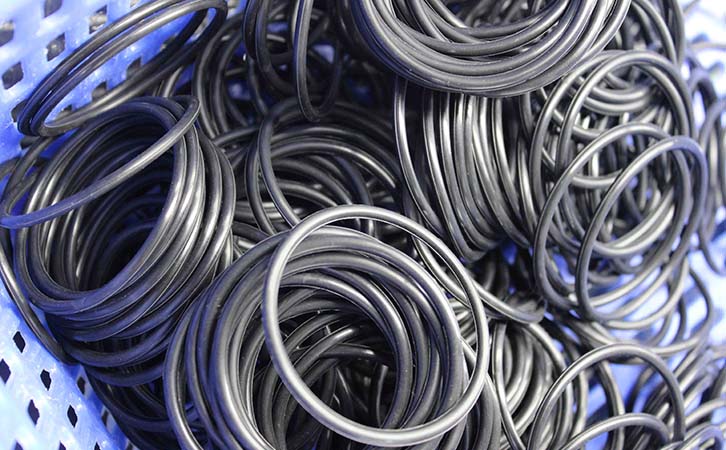Liquid silicone O-rings have significant differences in material and process compared to traditional solid-state high-temperature vulcanized silicone (HTV) O-rings, which gives them unique properties and advantages.
The production process of liquid silicone rubber (LSR) O-ring
Liquid silicone injection molding is the core technology for producing LSR O-rings. It is a highly automated, precise, and efficient process.
Core Material: Liquid Silicone (LSR)
This is a low viscosity, honey like liquid two-component material (component A+component B). A. The B component is accurately mixed in a 1:1 ratio before being injected into the machine, and the sulfurization reaction begins immediately after mixing.
Unlike traditional solid rubber compounds, LSR does not require complex rubber mixing processes and provides high consistency and purity.
Production process: Liquid Injection Molding (LSR Injection Molding)

This process is completely different from molding and can be summarized as the following steps:
1. Feeding and Measuring
The two components A (basic rubber material+catalyst) and B (basic rubber material+inhibitor/crosslinking agent) are stored separately in the material bucket.
Transport the two components to the static mixer in a 1:1 ratio using a metering pump (usually a gear pump). Measurement accuracy is the key to product quality.
2. Mixing Injection
Static Mixer: Components A and B are thoroughly and uniformly mixed under high pressure through a long tube with multiple sets of spiral blades inside, but no chemical reaction occurs.
The mixed liquid adhesive is injected into the closed mold cavity. High injection pressure and fast mold filling speed.
3. Hot vulcanization
The mold is heated to a high temperature of 180 ° C-200 ° C.
The high temperature activates the catalyst in the mixture, causing it to rapidly undergo cross-linking (sulfurization) reaction, instantly solidifying from liquid to elastomer. The vulcanization time is very short, usually only a few seconds to tens of seconds.
4. Mold Opening and Ejection
After vulcanization is completed, the mold is opened and the formed O-ring is automatically pushed out by the ejector pin.
Key advantage: Due to the precise and dense cold runner system used in LSR injection molding, the rubber material remains at a low temperature in the runner without vulcanization, and is only thermally vulcanized after injection into the mold cavity. Therefore, there is almost no flash and no need for debashing process, saving a lot of material and post-processing costs.
5. Post curing
Similar to solid silicone, O-rings with high performance requirements (such as wood and low extractables, more stable physical properties) may still require secondary vulcanization. But for many applications, LSR can be used after molding.


